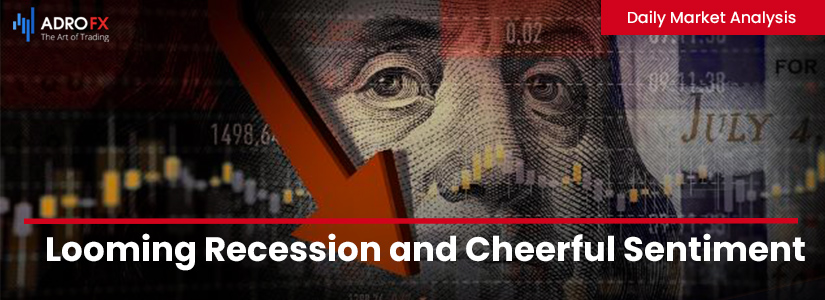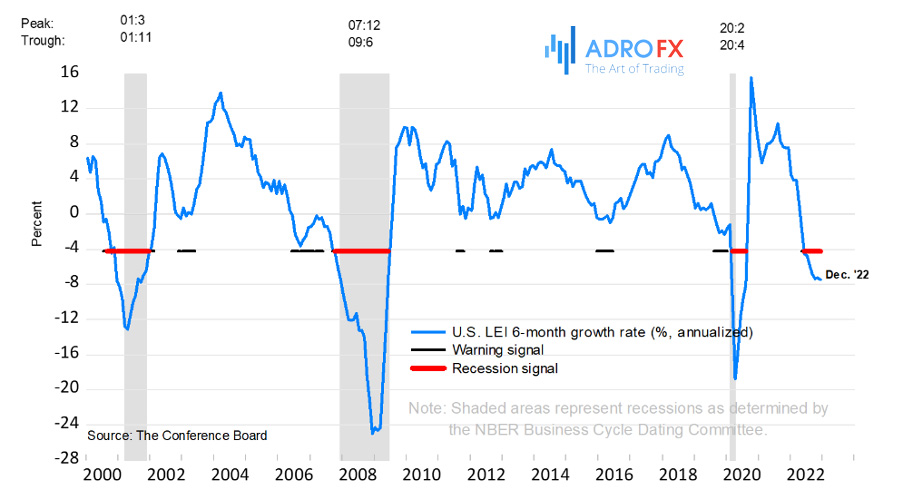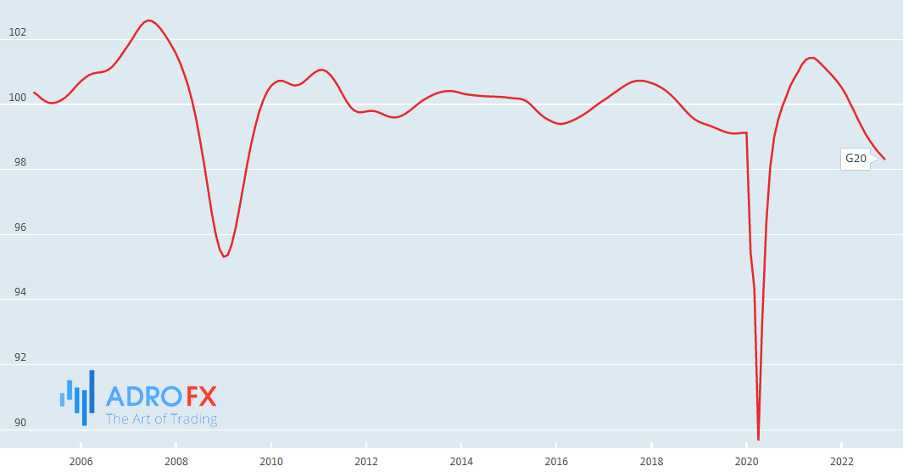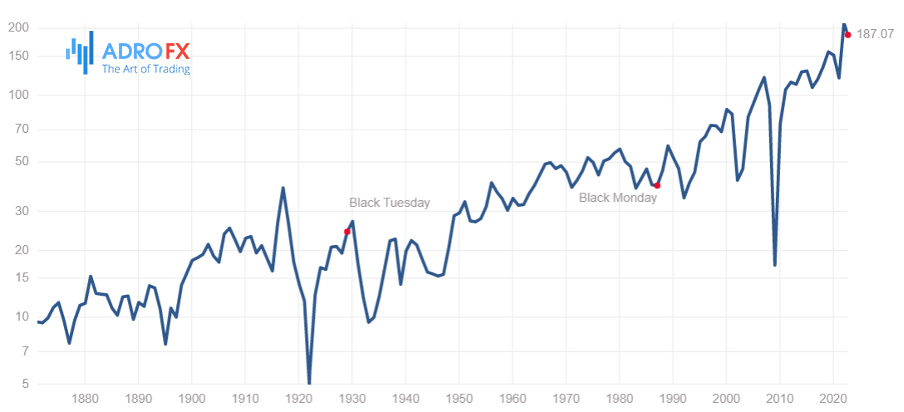Looming Recession and Cheerful Sentiment | Daily Market Amalysis

Key events:
- UK – BoE Interest Rate Decision (Jan)
- UK – BoE MPC Meeting Minutes
- Eurozone – Deposit Facility Rate (Feb)
- Eurozone – ECB Marginal Lending Facility
- Eurozone – ECB Monetary Policy Statement
- Eurozone – ECB Interest Rate Decision (Feb)
- USA – Initial Jobless Claims
- Eurozone – ECB Press Conference
- UK – BoE Gov Bailey Speaks
- Eurozone – ECB President Lagarde Speaks
Signals of a possible recession continue to multiply, but what is happening now in the stock market does not match this scenario. Investors found themselves in a difficult situation. On the one hand, they need to protect themselves from further rollback in the stock market, on the other hand - they do not miss the potential recovery.
It's hard to argue with the recession forecasts flooding the news. For instance, one of Bloomberg's analysts made the following important observation:
"Stocks won't be able to show a prolonged rally and get out of a bear market until the cycle changes. As you can see in the chart below, stocks will only turn up when the leading data is better than the synchronous data.
Unfortunately, when the leading data is as bad relative to the synchronous data as it is now, the cycle change is first preceded by a recession. Based on historical data, stocks could fall another 15% or so if there is a recession in the United States."

An important indicator is the Leading Economic Index (LEI). The 6-month ROC index is especially closely watched because it is closely correlated with corporate earnings and has proven to be an excellent predictor of recessions. An impending recession is now indicated both by the 6-month LEI ROC and by the broad Economic Composite Index (EOCI) consisting of more than 100 individual economic indicators.

While the data continues to suggest that recession forecasts are correct, the market continues to ignore these warnings.
The stock market continues to show an upward bias despite shrinking earnings and a worsening outlook. Remarkably, several bullish formations are now forming, which in the past usually indicated a rise in stock prices in the short to medium term.
For instance, an important focus point for investors has been the compression in prices between the trend line from the January 2022 peak and the rising lows since October. This compression acts as a "spring," and in cases like this, when prices break through, their subsequent move is usually quite powerful.
As you might notice, since the January spike, every attempt to break above the downtrend line has been a false break, and the market has been declining. A breakout above the downtrend line indicates that prices are on the way up. Until we get evidence of a clear sustained breakout above the downtrend line, there is still a high risk of a false breakout.
However, it is now worth watching for several other improvements in the technical picture that are occurring contrary to fears of a recession.
So are we right to ignore recession forecasts?
While these bullish formations may yet break out due to bad news or an overly aggressive Fed stance, for now, they continue to point in favor of rising stock prices. This may seem strange given the flood of forecasts about the recession and the deteriorating financial performance of companies.
Based on past experience, stock prices usually bottom out six to nine months ahead of earnings bottoms. This happens because the market anticipates one outcome or another.

We now have plenty of reason to worry about the market's prospects over the next few months. As the market outpaces the economy, we should take seriously what current market events tell us in terms of tomorrow.
While we cannot ignore improving technical indicators, we cannot completely ignore forecasts of a recession.
Our past experience shows quite unambiguously the impact of rising interest rates on economic growth, employment, and personal income.










